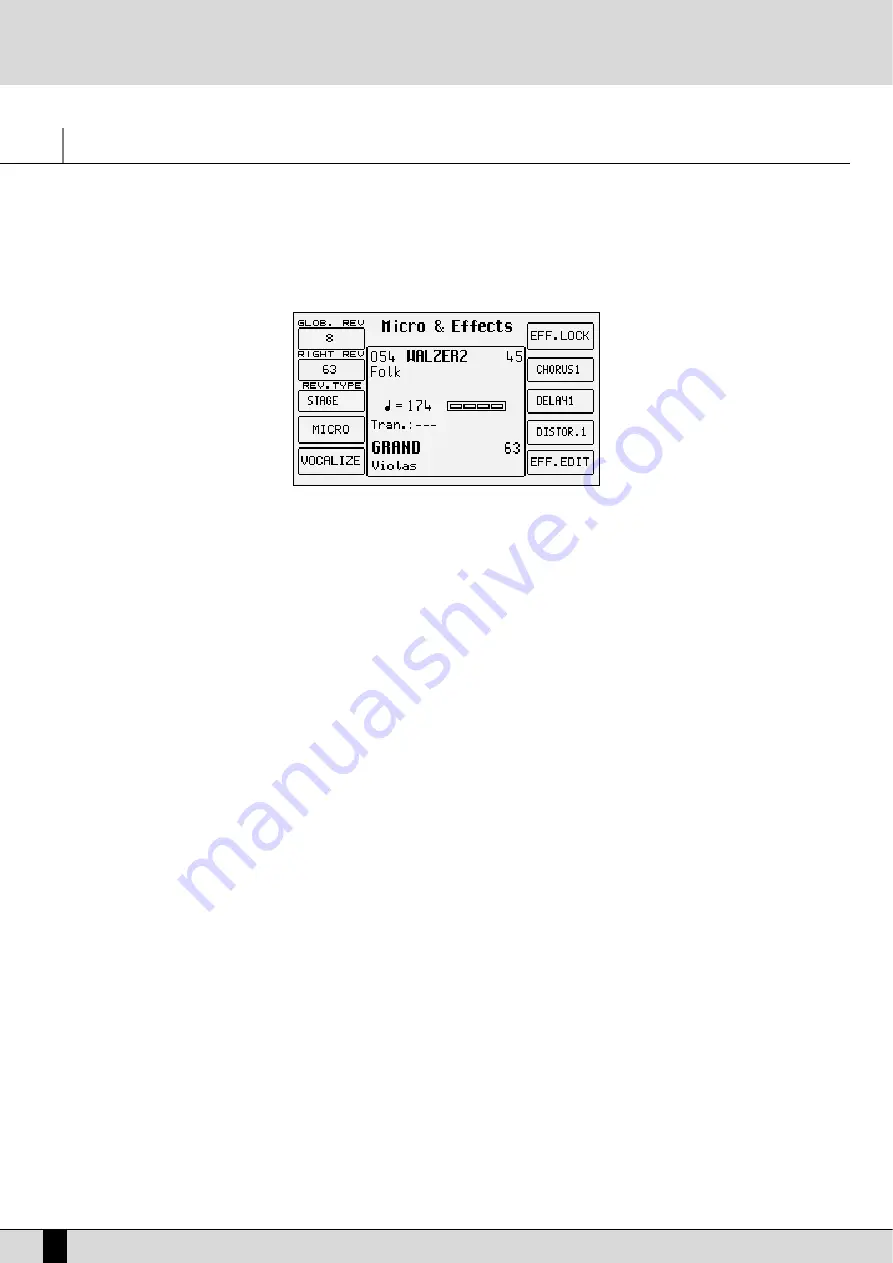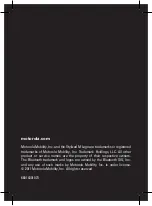
E
ffects
The DSPs of the VEGA are capable of producing Reverb, Chorus, Delay and Modulation effects that can be applied to the Upper and Lower parts,
to the accompaniment tracks and to external audio signals. The VEGA employs up to three DSPs to generate the global Reverb; and for the
Upper parts, an additional three groups of Chorus, Delay and Distorsor effects that can work both in parallel and in series in Programs and in
parallel for the automatic accompaniment tracks and the Lower parts.
The assignment of the Delay, Chorus and Distorsion effects is done in the
Arrange View
menu for the automatic accompaniment tracks and the
Lower parts. For the Right section the assignment of the effects is done from the
F2 Effect
menu or using the Programs.
To access the effects menu from the main page press
F2 Effect
.
The Effects menu is composed of the following:
F1 Global Reverb:
This is the Reverb assigned to the whole keyboard and to the whole tone generator, despite the single parts. The value
(modified using the
VALUE +/-
push buttons) establishes the amount of the Reverb applied.
F2 Right Reverb:
This is used to specify the quantity of Reverb to be applied separately to the Right part of the keyboard that is dedi-
cated to the lead. The value is modified using the
VALUE +/-
push buttons.
F3 Reverb Type:
This is used to choose the Reverb algorithm among Room, Studio, Club, Hall, Theatre, Stage, Arena. To choose the type
of algorithm use the
VALUE +/-
push buttons.
F4 Micro:
This calls up the menu to modify the effects for the microphone input described in the relevant chapter.
F5 Vocalize:
This calls up the menu to choose and program the Vocal Set of the Vocalizer.
F6 Eff. Lock:
This allows the user to lock the effect type (Reverb, Chorus, Delay o Distorsor) currently enabled so as to avoid
changes when e.g, you change from one style to another.
F7 Chorus:
This is used to select the type of algorithm between Chorus 1, Chorus 2, Chorus 3, Chorus 4, Chorus 5, Flanger, Short
Delay, Feedback and four User Chorus using push buttons
VALUE +/-
. Once the algorithm has been selected, it is edit-
ed using
F10 Edit
.
F8 Delay:
This is used to select between eight types of pre-set Delays and four User Delays using the
VALUE +/-
push buttons.
Once the algorithm has been selected, it is edited using
F10 Edit
.
F9 Distorsion:
This is used to select between eight types of distorsion and four User Distorsion using the
VALUE +/-
push buttons .
Once the algorithm has been selected, it is edited using
F10 Edit
.
F10 Edit:
This is used to access the menu dedicated to programming the most important parameters of an algorithm.
VEGA
68
Effects
Содержание Ketron
Страница 1: ...Owner s Manual I n g l e s e VEGA VEGA VEGA...
Страница 3: ......
Страница 94: ...Technical Tables...
Страница 95: ......
Страница 97: ......
Страница 117: ...VEGA 116...
Страница 118: ...VEGA 117 Notes...
Страница 119: ...VEGA 118 Notes...
Страница 120: ...VEGA 119 Notes...
Страница 121: ...VEGA 120 Stampa FLAMINI srl Osimo AN 12 2002...
Страница 122: ...KETRON s r l 60020 Ancona ITALY Via Giuseppe Taliercio 7 Ph 39 0 71 285771 Fax 39 0 71 2857748 www ketron it...
















































